AMA DABLAM EXPEDITION WITH ISLAND PEAK
AMA DABLAM OVERVIEW
An expedition combining Ama Dablam (6,812 meters) and Island Peak (6,189 meters) offers a thrilling adventure in the heart of the Himalayas, blending challenging climbing with breathtaking scenery.
Ama Dablam 6812M renowned as one of the most beautiful and exposed Himalayan mountains in the Everest region. It is a highly sought-after mountain for climbing enthusiasts. Whether you plan to tackle it before or after a bigger expedition like Everest. Ama Dablam is a mountaineering challenge on its own. Many alpinists and mountaineers consider a climb of Ama Dablam to be a “must-do” experience.
Pre-requisite requirements (2 or more 6000M + multi-pitch climbing skills): Lobuche East & Island Peak, Chulu West, Khumbu 3 Peak expeditions, Cholatse, Aconcagua, Mt, Blanc (Similar 4000M – 6000M peaks or higher), and multi-pitch climb (rock or ice), rock climbing grade up to 5-9+/- to 5.10 a,b,c
From Lukla, our expedition includes a cultural trek through the mesmerizing Gokyo lake/valley to the base camp, followed by a climb of Ama Dablam’s terrain via technical rock, vertical snow, and ice routes, and breathtaking exposed panoramic views of Everest, Lhotse, and Makalu from the summit. We will ascend Amadablam via the South West ridge route, setting up 2 or possibly 3 camps (camp 3 depends on the assessment of our rope fixing team). On summit day, the route involves steep snow and ice slopes with extreme exposure leading directly to the summit.
History: It was first summited on 13th March 1961, a Silver hut scientific expedition led by Sir Edmund Hillary. Ama Dablam’s expedition has been a dream for many mountaineers. Its Southwest ridgeline is the safest route to climb this amazing peak.
EXPEDITION HIGHLIGHTS
- Ama Dablam 6812M summit, Island Peak 6189M or Lobuche East 6119M (Acclimatisation training peak)
- South-west ridge route, Camp 1 – 2 (possible camp 2.9 or 3) strategy
- 10 days in Ama Dablam Base camp 4570M and higher
- 1:1 Guide/Climber ratio throughout the expedition
- Scenic Khumbu valley trek
Itinerary
-
Day 1 & 2 Arrival and Kathmandu (Equipment check, induction with Expedition leader )
-
Day 3 Lukla / Monjo 2800M (5 - 7 hours)
-
Day 4 & 5 Namche Bazaar/ Acclimatisation 3440M (3 hours acclimatisation trek, up to 3375M)
-
Day 6 Namche / Phortse 3840M (6 hours)
-
Day 7 Phortse to Pheriche 4371M (5 to 6 hours)
-
Day 8 Pheriche acclimatisation day
-
Day 9 Pheriche to Chukung 4730M (6 - 7 hours)
-
Day 10 Chukung to Island Peak BC 5100M (5 - 6 hours)
-
Day 11 IPBC to Summit 6189M to BC to Chukung (10+ hours)
-
Day 12 Chukung to Pangboche 3985M (5 - 6 hours)
-
Day 13 - 22 (10 Days of climbing, Ama Dablam Base Camp. Puja ritual ceremony, contingency day, Training and preparation for summit bid. Camp 1, Camp 2, possibly Camp 3 and Summit)
-
Day 23 Return trek to Namche (6 - 7 hours)
-
Day 24 Return trek to Lukla (6 - 7 hours)
-
Day 25 Fly Lukla to Ramechap (30 min) and drive to Kathmandu (4-6 hours, traffic dependent)
-
Day 26 Final Departure
Include / Exclude
Cost Includes:
-
- IFMGA or NMA certified Guide leader
- $500 Individual tip pool. (This is not summit bonus tips) The tip pool will be fairly distributed among all 7 Summits staff members. (Guides, porters, drivers, hotel security, and staff). Guest may personally hand in extra tips to our guides and porters)
- 7 Summits branded merchandise (Down Jacket, Cap, Buff)
- 1:1 Sherpa/client ratio. (Additional Sherpa Guide support can be arranged, extra charges apply)
- 2 nights before the expedition and 1 day after the expedition. Hotel in Kathmandu. (Should clients return early from their expedition, clients will be responsible for their extra Kathmandu hotel bookings)
- All trekking permits (Khumbu Region Permit and TIMS)
- All internal-local transportation to and from the trekking trailhead
- Breakfast, Lunch, and Dinner on trek days. (one meal order)
- Lodge accommodation during the trek
- Full porter support to/from Base Camp
- Fooding and camp lodging arrangements at Base Camp on a full board basis (this includes 3-course meals, services of cook crew, camping equipment, kitchen tent, dining tent, toilet tent, shower tent, kitchen items etc)
- Island Peak 6189M acclimatisation peak or Lobuche East 6119M (Spring season)
- 30 kgs personal weight (Extra additional weight, clients will need to hire an additional porter. Estimated $1000 USD for 27-28 days)
- Solar charging at Base Camp (Comms will be given the priority)
- Snacks and goodies for rest days include chocolate bars, ground coffee, and nuts.
- Tents, pots, and pans for use on the mountain
- Expedition tents (2-person tents) Brands Salewa, Mountain Hardwear, Samaya equipment, Kailas
- Food and fuel above Ama Dablam Base Camp. Minimum choices from Camp I to Camp III.
- 7 Summits staff stationed at Camp 1 will be melting ice and providing hot water for you when you camp there
- Training day with technical skills. This is not a course day and you should already be well familiar with abseiling and basic climbing techniques
- Ropes, climbing gear required for equipping the mountain, ice screws, snow stakes, etc
- Expedition 1st aid kit including antibiotics and medicines for use at altitude
- Insurance for Base Camp crew, climbing Sherpa, and porters
- Radio comms team at Base camp
- Frequent updates on expeditions
- Porters throughout the expeditions
- Arrival pick-up and departure
- Welcome or Farewell Dinner
Cost Excludes:
- Visas and travel insurance
- Summit Bonus Tips ($700) Per Person
- Entertainment and food ( Kathmandu )
- Bottled drinks and beverages
- Evacuation (will be done in your account)
- Single supplement Charges
- Laundry, Phone services, Personal expenditure transactions
- Optional trips
- Tea breaks, chocolates or other snacks and any meals besides breakfast, lunch and dinner.
- Delay and cancellation because of natural phenomenon
- International flights to Kathmandu
Price per person
AMA DABLAM COST—
21 Days – $7950 P/P
26 Days – $8250 P/P
Please inquire about prices in your local currency. We accept payment in £GBP/ €EUROS/ $AUD
Deposit required: $1000 p/p
6,810M / 22,349 FT. ACCLIMATISATION AT ISLAND PEAK 6189M
Usefull Information
ACCOMMODATIONS
Day 1 – 2 and 25 (5 Star hotel. Kathmandu – Hotel Dusit Princess)
AMA DABLAM COMBO–
Baruntse 7129M & Ama Dablam Expedition
Ama Dablam & Cholatse 6460M Expedition
Manaslu 8163M & Ama Dablam Expedition
AMA DABLAM EXPEDITION STRATEGY
Training and acclimatisation at Island Peak 6180M or (Lobuche East 6119M via Gokyo)
We will be climbing Island Peak or Lobuche East as our training and acclimatization peak before we depart for Ama Dablam Base Camp.
Ama Dablam Base Camp 4529M
During the Ama Dablam expedition, we will set up 2-3 camps and climb through the safest route, the southwest ridge. After establishing ourselves at Base Camp, trekking up the moraine we will move higher to Camp 1 (5,807 meters/19,052 feet). From Camp 1, fixed-line ropes are used for traversing on solid granite and climbing on snow/rocky exposed ridges and vertical granite to Camp 2. Camp 2 (6,200 meters/20,594 feet), also known as the “YELLOW TOWER,” is reached after 60-70 feet of vertical rock climbing. This marks the start of the more difficult and objectively dangerous part of the climb.
BASE CAMP (4529M) – CAMP 1 (5800M) AND CAMP 2 (6100M) ROTATION
Camp 2 Ama Dablam
Renaye, climbing to mushroom ridge, Ama Dablam Expedition. Photo – Masaru Kanda
From Days 12 to 19-20, we will review our climbing skills and complete a few acclimatization rotations to get accustomed to the terrain and properly acclimatize our bodies for the final summit push. During these rotations, we will carry our personal gear to our camps and store it there.
The very exposed nature of the route on Ama Dablam provides exciting climbing, although the slope is not as steep as one might expect. Climbers with moderate technical experience can attempt this route. On summit day, the route crosses between ice cliffs and follows a snow arête directly to the 6,810 meter summit. However, the climb is physically demanding and requires long hours of climbing on the final summit day.
CAMP 2.1 OR CAMP 3 (6400M) (SITUATIONAL) AND SUMMIT BID
7 Summits Guide on Ama Dablam summit 6812M
After evaluating the safety and conditions of the serac, we will decide whether to set up camp 3. If our lead Sherpa determines that the campsite is dangerous, we will make our summit attempt from Camp 2, starting in the early hours. (midnight or 1 aa)
The summit of Ama Dablam is wide and offers breathtaking views on clear weather days. Many of the 8000-meter and 7000-meter peaks are visible from the top of Ama Dablam, including Makalu (8463 meters) and the Baruntse range (7170 meters).
Equipment List
Mountain climbing Gears
- Helmet ( Black diamond, Petzel )
- Alpine Ice Axe (65-70cm)
- A mountaineering harness, with adjustable leg loops.
- Ascender or Jummar
- Carabiners: 3 locking and 6 regular
- Rappel device: ATC or figure 8
- Crampons 12 point
Mountaineering boots
- Mountaineering boots suitable for above 8000m; La Sportiva or equivalent
- Hiking shoes for the trek to base camp with ankle protection
- Thermal mountaineering socks or equivalent: 6 pairs
- Liner socks or equivalent: 6 pairs
Body Layers:
- Expedition suits – North face Himalayan suit or similat
- 4 merino base layers: top / bottom set
- 5 mid layer top: breathable Underwear
- Lightweight Nylon Pants: 1 pair
- Hooded Soft Shell jacket To be worn over other layers
- Soft Shell Guide Pants: Gore Tex and breathable
- Hooded Hard Shell: Gore Tex and breathable
- Hard Shell Pants: Gore Tex and breathable, big enough to wear over your guide trousers
- Insulated Down Jacket with hood: North Face Himalayan parka or equivalent
- Insulated synthetic Pants: Worn primarily when climbing below Camp 2
- Long jones equivalent to Rab’s Polartec or equivalent: 2 pairs
Headgear and Hand wear:
- Wool hat (ski hat)
- Sunhat: To shade your face / neck from the sun on a hot day
- Buff: To protect your neck / face from the sun
- Glacier glasses: Full protection with side covers or wrap around
- Ski goggles: To be worn on summit day in the event of high winds
- Lightweight synthetic liner gloves: For wearing on a hot day; 2 pairs
- Soft shell gloves: To wear for moderate cold / wind
- Shell glove with insulated liner: To wear for severe cold / strong wind
- Expedition Mitts for bad weather
Personal Gear:
- Expedition Backpack: 65L pack should be large enough.
- Trekking Backpack: To carry on the trek to base camp. Simple and light.
- Sleeping Bag: Rated to at least -40°F. Goose down or synthetic
- Compression stuff sacks: 3 large ones; for reducing volume of the sleeping bag, down parka, etc., in your pack.
- High Quality sleeping pad (1 for base camp and 1 for high camps): Full length is preferred.
- Closed cell foam pad: To be used in conjunction with the inflating pad for warmth and comfort when sleeping.
- Trekking poles with snow baskets: Adjustable poles
- Cup: Plastic insulated cup for drinking
- Bowl: A plastic bowl for eating dinner or breakfast
- Spoon: Plastic spoon
- Head torch: 1 normal for base camp and 1 with remote battery systems for climbing at night. This will be used whilst climbing at night
- Sunscreen: SPF 50 or above
- Lip balm with sunblock
- Water bottles: 2 wide mouth bottles with 1 litter capacity
- Water bottle parkas (2): fully insulated with zip opening
- Thermos: 1 litre (buy a good ones to keep your water warm for longer hours)
- Pee bottle: 1 litre minimum bottle for convenience at night in the tent
- Toiletry bag: Include toilet paper and hand sanitizer and small towel
- Hand warmers & toe warmers
- Pen Knife or multi tool (optional)
- Camera: bring extra batteries and memory cards
- Personal solar charging system (optional but recommended)
- Travel Clothes
- Duffel bags (2) with locks: To transport equipment
- Base Camp extra Items: Kindle, I pad, smart phone, etc
- Snack food: Please bring a few days of your favourite climbing snack food such as bars, gels, nuts, beef jerky, etc. A variety of salty and sweet is recommended to give you extra energy.
- Small personal first aid kit: Include athletic tape, Band-Aid’s, Ibuprofen, blister care, personal medications, etc
- Medications and Prescriptions: Bring antibiotics (Azithromycin, etc.), and altitude medicine such as Diamox and dexamethasone*
-
 Best Seasons March to May, September to November
Best Seasons March to May, September to November -
 Group Size 2 to 10
Group Size 2 to 10 -
 Duration 26 DAYS BOOKING OPEN
Duration 26 DAYS BOOKING OPEN -
 Maximum Altitude 6812M
Maximum Altitude 6812M -
 Trek Difficulty Challenging
Trek Difficulty Challenging

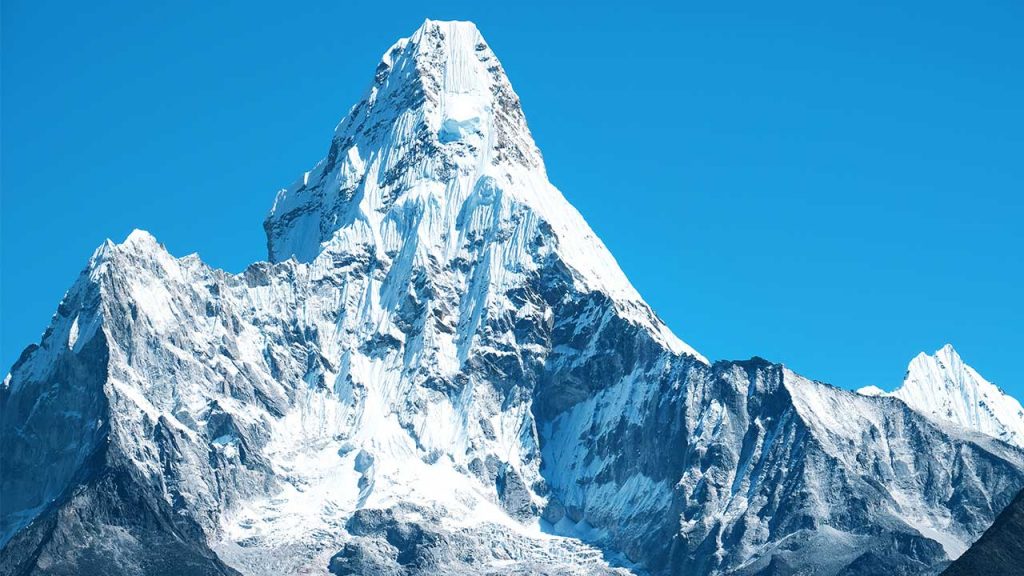


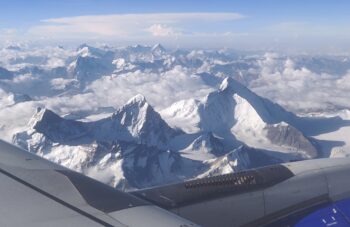
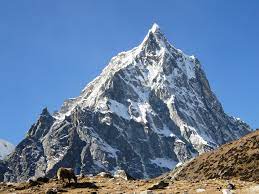
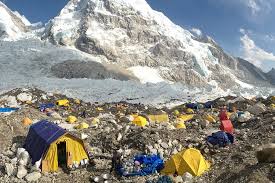
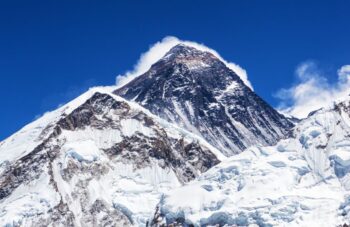
Leave a Reply